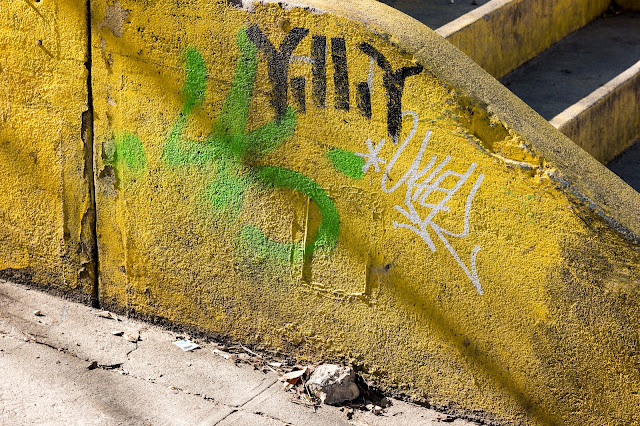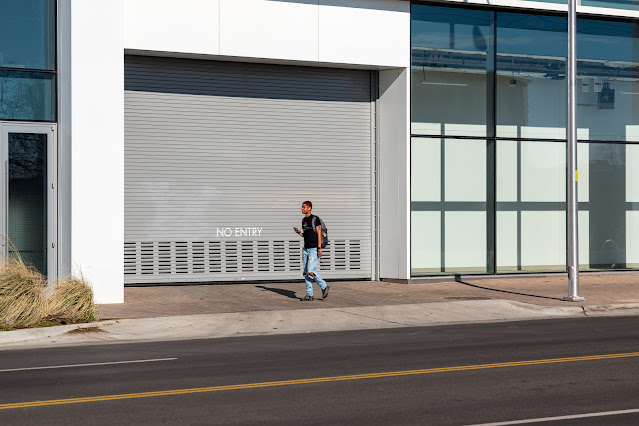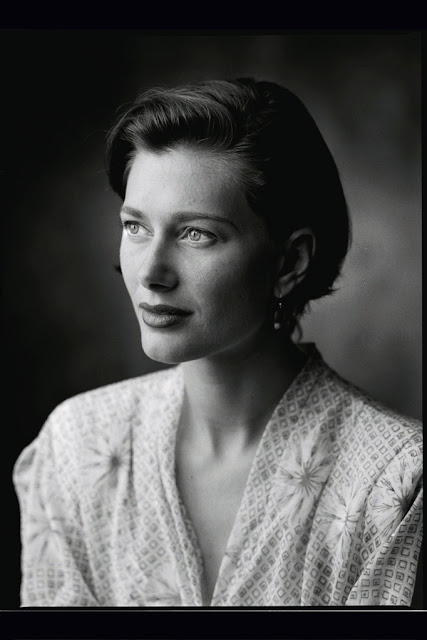1.12.2023
Love the camera. Love the lens. Hated the combination today. Not my most productive afternoon. By a long shot.
1.11.2023
Vintage-y 50mm lenses. More personality per $$$. Now available for just about any mirrorless camera.
1.09.2023
Someone emailed to find out "why I never use that expensive Leica zoom lens???" and to also ask if they could see some samples. I'm nothing if not accommodating....
Thoughts about photography while camping out at my Subaru dealer.
First random thought. Wouldn't it be great if camera makers and their dealers offered a six month, free check up on new cameras that they sell? You splash out for a Nikon D850 or a Sony Alpha One, etc. and, after six months of continuous use you bring it back to the dealer and let them hook it up to a diagnostic machine and make sure everything is functioning just as it should be. They would also clean the sensor, clear all the optical glass surfaces and give the body a sprucing up as well. An added touch would be the dealer updating camera and same brand lens to the latest firmware versions. Once your camera is checked and cleaned, primed and primped a service rep would join you in the well appointed waiting area to see if you had any questions about the camera which you'd like answered. Maybe you're hazy about how to reprogram a function button. Maybe you need a quick course on the difference between video settings. Whatever. You leave the dealer with renewed confidence in your expensive camera purchase and warm, fuzzy feelings about the firm you are doing business with. They ingratiate themselves with a spendy customer. Win-win.
I know it's a day dream scenario but we could all at least hope for a return to some level of customer service; don't you think?
Second random thought. Funny how minds change. A year ago I thought of the Leica Q2 as a one trick pony. And I couldn't really imagine having a wide angle camera as a primary photographer's camera. A 28mm fixed lens? Crazy! I read reviews wherein writers extolled the flexibility of the "cropping" feature of the camera and immediately and repeatedly thought to myself, "gimmick." But at some odd time last week, while looking at files I'd made during an afternoon adventure with the Q2 I found myself appreciating the images I took, in a new way.
I've slowly but progressively been expanding my appreciation of wider angles of view and it was fun to see novel new (to me) ways of approaching subjects and how much the camera facilitates that way of seeing, but I also uncovered a number of images where I'd shot with the 35mm frame lines or the 50mm frame lines and was equally happy with the overall quality of the cropped images and also how quick and easy it was to hit one button to crop and to see those old, familiar frame lines in the finder showing me my final compositions.
Some of my first cameras were rangefinder cameras which had bright line finders. Being able to see variations of angle of view is great fun. But being able to see what is just outside the chosen frame and being able, in the moment, to decide to shift the camera in one direction or the other to include or exclude stuff was something I missed in SLR cameras even though I didn't realize just how much I missed it at the time. Having a view outside the frame opens up more options for better composition. You see more of the potential in a frame. I know a few other EVF cameras have enabled a "sports view" which is basically the same thing.
It's interesting to me that we lived with the ability to view outside the frame lines for decades in the film era, with our rangefinder cameras, and we are just now getting that feature back. Another positive point for EVFs!
I knew I'd be happy with the 35mm frame lines in the Q2. I knew they would be big enough in the finder to be easy to use. I also knew that 30 megapixels of resolution would be just fine for anything I'd use the images for. But I was leery about the smaller size of the 50mm frame lines. But really, I didn't need to be. They are fine. Easy to work with. And the high res of the EVF is a helpful adjunct. I'm coming to consider the Q2 as a zoom camera with a nice range of wide to normal lenses than the more limited view I had of the camera before I started using it. I'll definitely use it for travel unless I have specific needs that the camera doesn't cover. The only gap I can see is, of course, at the long end of the cropping ability of the lens. Is the implementation of the 75mm frame line a legitimate feature or just window dressing to appease wide-angle-reticient, old school photographers like me to consider the camera a full fledged working tool?
Third random thought. I was remembering an avenue of conversation I was having with my friend, James over coffee last Saturday morning. It was about "archiving" photographic work. I've read too much recently from older photographers (people my age...) about the necessity of archiving all of their work and preserving it for future generations. Now, if these comments were coming from Richard Avedon or even Annie Leibovitz I'd get it. There is a value in their work that is tied not just to the style and execution of their images but also because they had access to celebrities, politicians and others who shaped and changed our moment in history. Our times. And they reached out with gusto and leveraged that access to make remarkable images. But most of us aren't working at that level and the images we're making aren't necessarily much more than the result of a fun pursuit in the moment.
Both James and I have had to distill the households of deceased parents down from endless to manageable. And we both became aware that what constituted "treasures" for one generation were mostly a burden for successive generations. The classic case being a collection of china/place settings which my grandmother passed down to my mother. The plates and dishes were mostly used on a few special occasions but had no real relevance to me or my siblings. We each grew up, married and bought the place settings we wanted to have in our daily lives. Even when we host dinner parties we no longer hew to the old traditions of using endless china for each course of a meal. And who would want to hand wash all of the plates and dishes from a big dinner party anyway?
When my parents passed away the task of disbursing their collections of domestic "treasures" fell to me. The truth of the matter? No one wanted to accept the burden, both physical and psychological, of all those pieces of china. No one thought the old patterns or design touches from the 1920s and 1930s were particularly charming. And the inventory was out of step with current lifestyles and homes. We no longer have the seemingly endless storage capacity that past generations of our family worked with. No basement in which to store boxes of unused things.
I offered the collection to my sister. She declined. I offered them to my brother and he was adamant that he didn't have the space for even one more box. As the executor I felt obliged to "save" them and now have a boxed, unopened since I packed it up three or four years ago, nesting on a storage shelf somewhere. I'm adamant about finding a home for it all before I drop dead and plates and dishes and serving utensils move on to become a burden for my own son. Who has even less interest in the crockery of old.
I feel that for most people, myself included, that we have an overweening appraisal of our own photographic work but in fact it's much like our parents' regard for those older dishes. Those dishes have memories attached to them that were hard-wired to the original owners but those very specific memories are not transferrable in a meaningful way from generation to generation.
I love about 100 of my photos. A portion of them are loved by me because they are of the people I love. And of one perfect dog. Most of them are photographs I've taken over the years exploring other countries. A few of them are portraits of which I didn't have extended feelings for the subject over time but just loved the look of the photographs. But that bond with the photographs of portrait subjects I met and photographed once is hardly transferrable to anyone else. The photo and I are bonded. But that doesn't mean the photo has relevance or value to anyone else. No matter how much they adore me in this moment.
I think it's ego and fear of our own mortality that pushes us to believe we need to pass on our collection of non-family photographs to another generation. Exceptions apply. But they are very few. If you have a series of images that is specific to a field of knowledge and the value is less dependent on your personal bond with the photographs and more dependent on their value to a field or culture (say images of an indigenous culture that has declined or disappeared so that your images are vital to understanding and appreciating that culture) then you have a case for creating an archive and sharing it.
But if the images are the sort that I find myself endlessly taking: street scenes, beautiful strangers, strange strangers, and the work photographs of products and people whose purpose in being photographed will quickly fade, then your impetus to create a carefully indexed archive is probably fueled more by the idea of personal, individual loss than any sort of favor to your descendants and heirs.
Carpe Diem is basic to my current philosophy of my own photography. I photograph to see how things look when I've interpreted them through a lens and camera. It's a pleasurable activity for me but I have no delusion that anyone 100 years from now will sit in a classroom and drone on and on about some aspect of that work. I understand that we can only live in the "now". I understand that the work adds value to my life right now and my goal isn't to provide some repository for future family members to ponder over and reminisce about a life that, like almost all of us, is pleasant but not out of the ordinary. In fact, I'll say it out loud. I'm average. I've worked inside the safety rails. I've mirrored the middle class tastes of the culture I grew up in. I have no incredible insight that will vanish from the earth if not scrupulously protected and preserved. The small samples of the photos they'll want will be of fellow family members. And only for a generation or two. If that.
If my work has any value to other photographers it's as a current institution of continuity. My work is the muddy bricks under the pavement on which the next generation rolls over right now and either wants to incorporate or move away from. We'll all be relegated to the vagaries of the memory of those closest to us who survive us. In several generations memories about us will be preserved only as well as the databases and written record allow. To put a higher value on my work strikes me as more of a burden to my artistic process than anything else. The idea of an archive being "necessary" distracts me from the pleasure of just photographing for myself.
In the same vein, I watched a video last week about a German photographer who has been shooting in the street shooting realm for thirty or more years. He was being interviewed and was asked about his routine of post processing. He responded that he resented any time spent NOT out shooting. He tried to make the cataloging and sharing process as quick and painless as possible because he honestly understands that, for him (and for me) it's the process of being out in the world taking photographs that is the enjoyable, satisfying and happy part of being a photographer. Sure, we both share our work and that's part of the happiness. But speaking for myself I want to share while I'm here and can read or see the feedback and the feelings that my work might generate. Once I'm gone none of this will matter to me.
You can't take it with you. Why would you want to burden the next generation with the hot desire to preserve something that no longer matters after you are gone? Seems like the ego trying to desperately cling to relevance in spite of its own mortality.
And then my car was ready. So I thanked my service advisor, once again appreciated having relatively new car that gets free service, tossed my latté cup into the trash can and got in my car. On the way home I went over my day's schedule and finding it to be a blank slate started planning a walk with a camera that would mostly (or entirely) only benefit me. The day most likely won't deliver stellar images that will be included in some future edition of Jansson's "History of Art" book but I'll look, and think, and absorb the energy that flows around me and take photographs so I can see how my reality looks hours removed from its playful capture. And I'll find interesting things to look at.
And that's all I've got today. Cars. Photographs. Coffee. Life. Health and Love. A calm day to enjoy a pleasurable hobby. Free time to walk through the world.
Why would I demand more?
The scary thing about the future is that it's so hard to predict....
As Marcus Aurelius or George Washington famously wrote on Twitter: "Photographs are just tiny transient paintings. It's the experience itself in which all value lies."
1.07.2023
Interesting stuff that happens downtown and also a portrait.
1.06.2023
If I use Instagram as research for black and white portraiture today I sure am seeing a lot of images that would have been in style in the 1990s. The 30 year style circle....











































